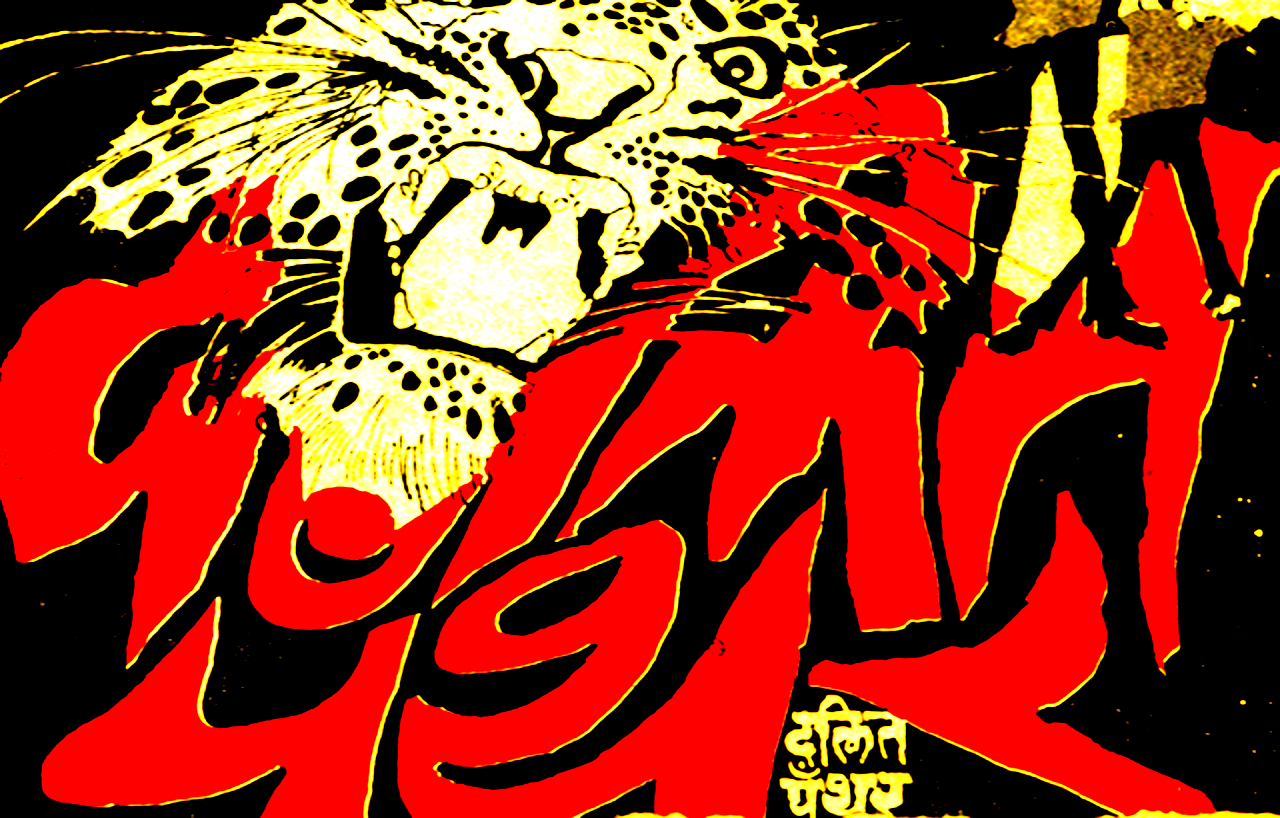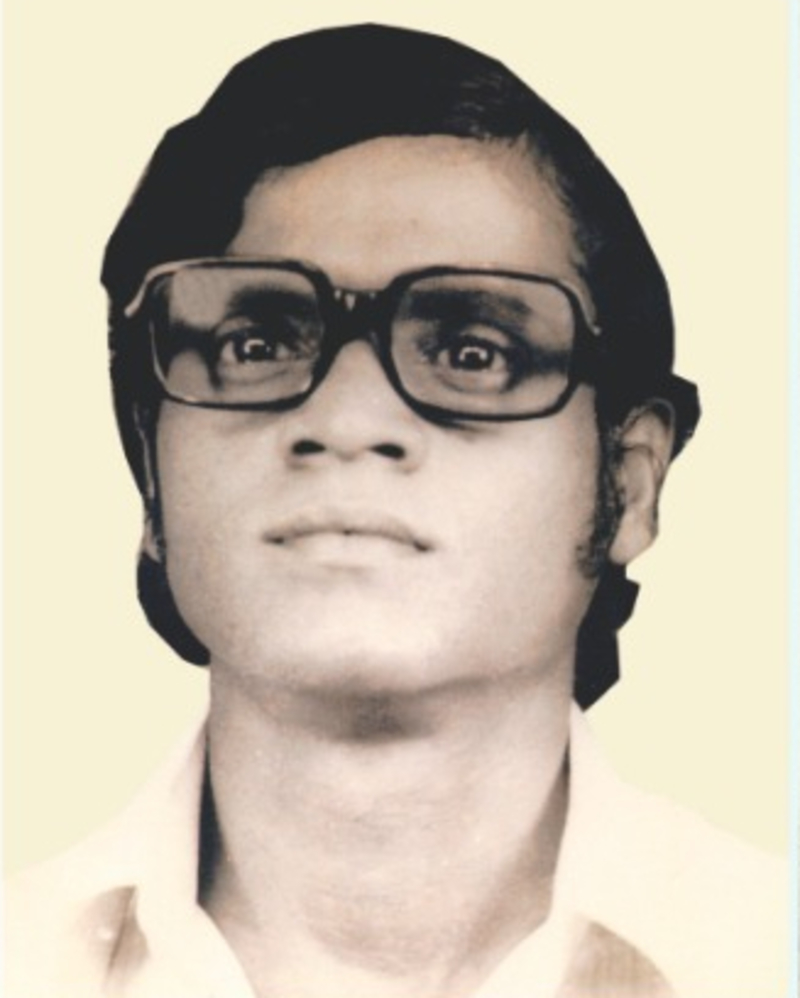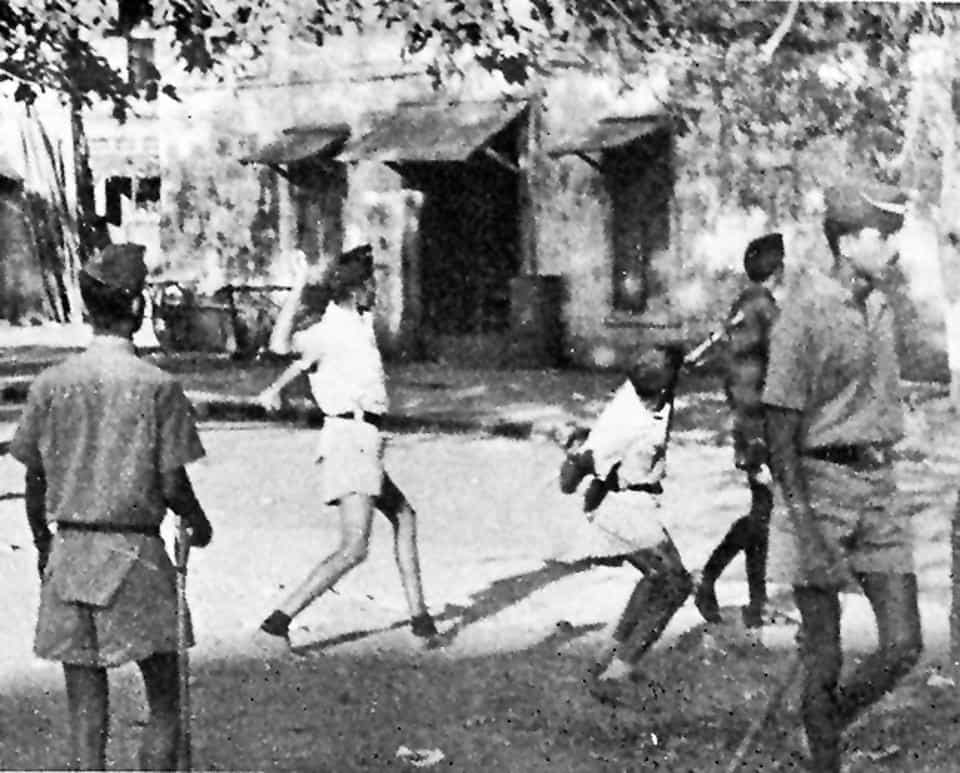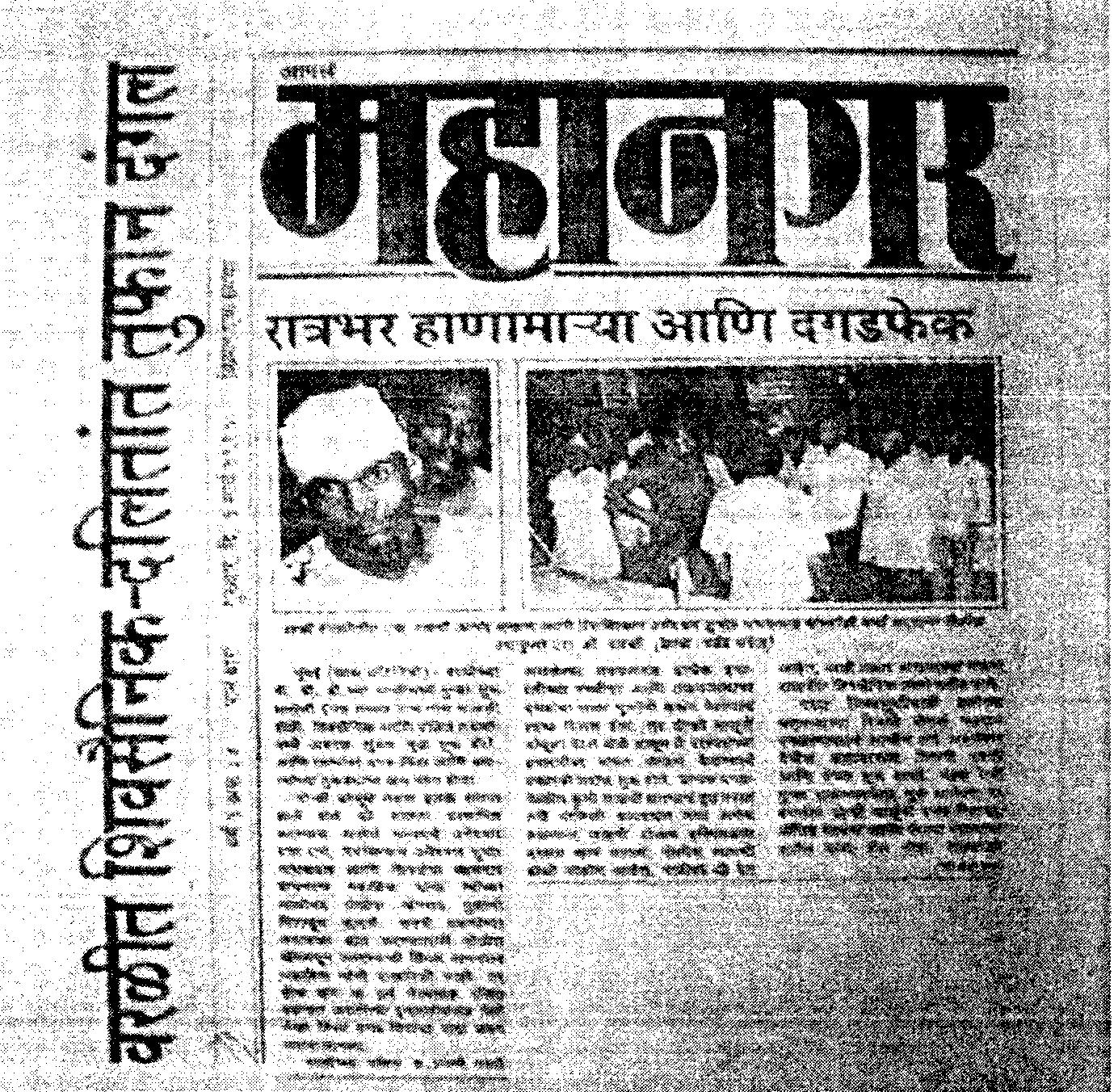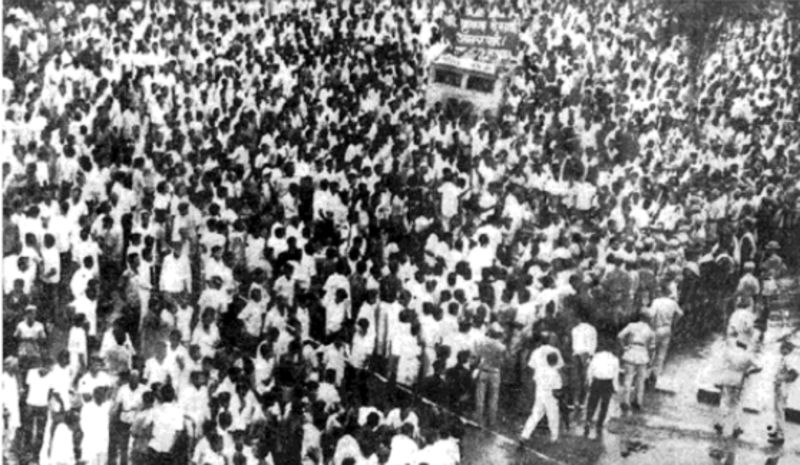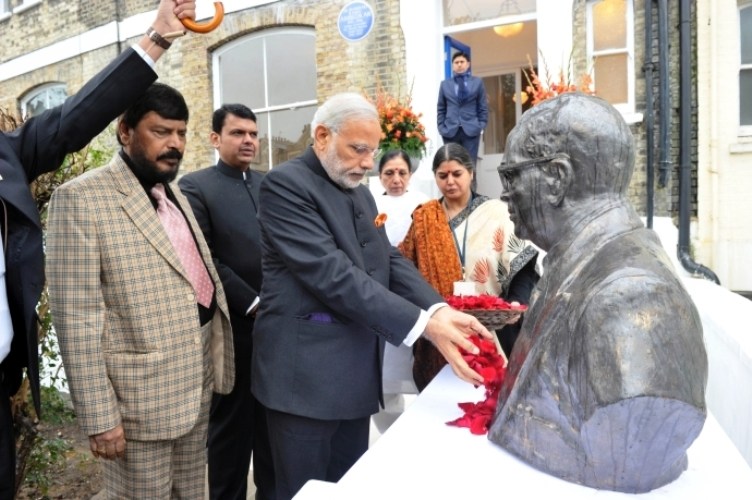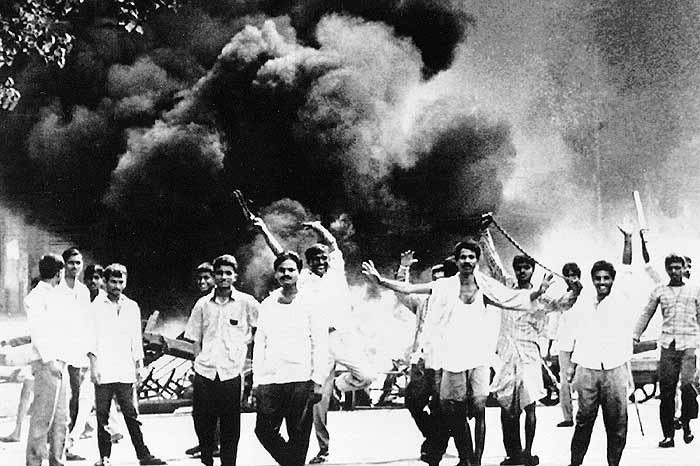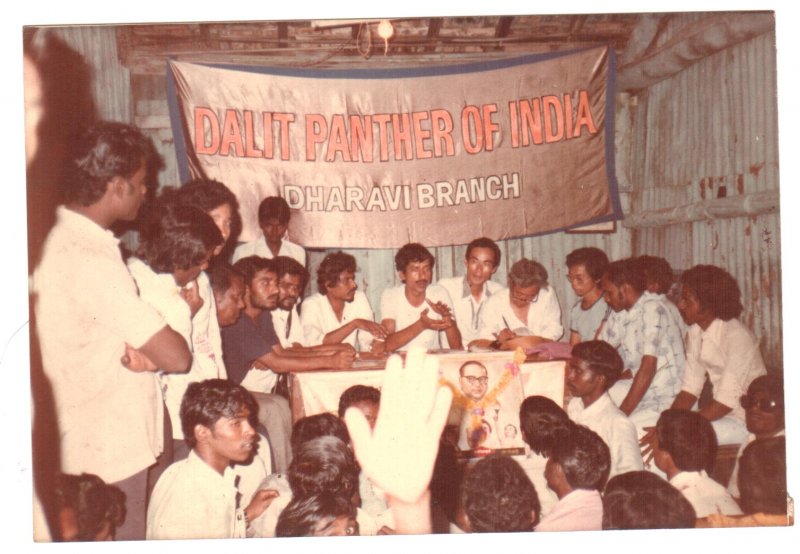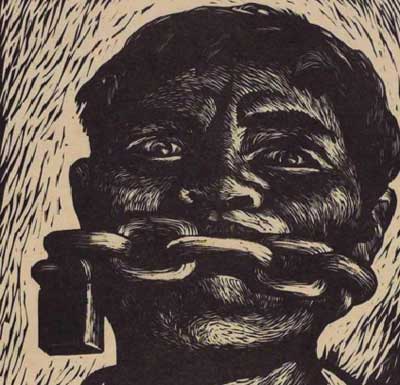10th January marks the martyrdom of Bhagwat Jhadhav, the first martyr of the Dalit Panthers Movement, a militant anti-caste struggle that shook Maharashtra during the 70s. Like every year, several anti-caste, cultural organisations and political parties including the Kabir Kala Manch, Samta Kala Manch, Republican Panthers and the Republican Party of India organised meetings in commemoration of Bhagwat’s martyrdom. Bhagwat Jhadhav, young leader of the movement, was killed by Shiv Sena during the infamous Worli riots at Mumbai, in 1974.
On the occasion of the 45th anniversary of Bhagwat Jhadhav’s martyrdom, GroundXero spoke with his brother, Sumedh Jhadhav, an anti-caste political worker and trade unionist himself. The conversation touched upon the history of the Dalit Panthers Movement, the history of the Shiv Sena, and certain key aspects of the anti-caste and working class politics of Maharashtra. For the manifesto of the Dalit Panthers, click here.
GX: Please tell us a bit about the Worli riots.
SJ: The Dalit Panthers was started in 1972, to respond to the atrocities that dalits were facing across Maharashtra. The group began with Namdev Dhasal, JV Pawar and others, the first meeting took place in the Kamathipura ‘red light area’ in Bombay. They were later joined by another would be prominent leader of the Panthers, Raja Dhale. Those were times when people were put through social boycotts, they were prevented from access to public water bodies, dalit women were being attacked by upper caste men. The main political parties that had emerged out of Ambedkar’s anti-caste struggle, the fractions of the Republican Party of India, were not doing anything to protect these people. Congress was in power in the state, led by CM Vasantrao Naik. And the RPI fractions of that time had become supporters of the Congress. Meanwhile, in 1966, the Shiv Sena had been formed under the leadership of Bal Thackerey. Shiv Sena emerged as one of the chief muscles behind these anti-Dalit atrocities. In order to resist such forces, Namdev Dhasal, Raja Dhale, JV Power and others founded the Dalit Panther movement in Maharashtra, drawing inspiration America’s Black Panthers movement.
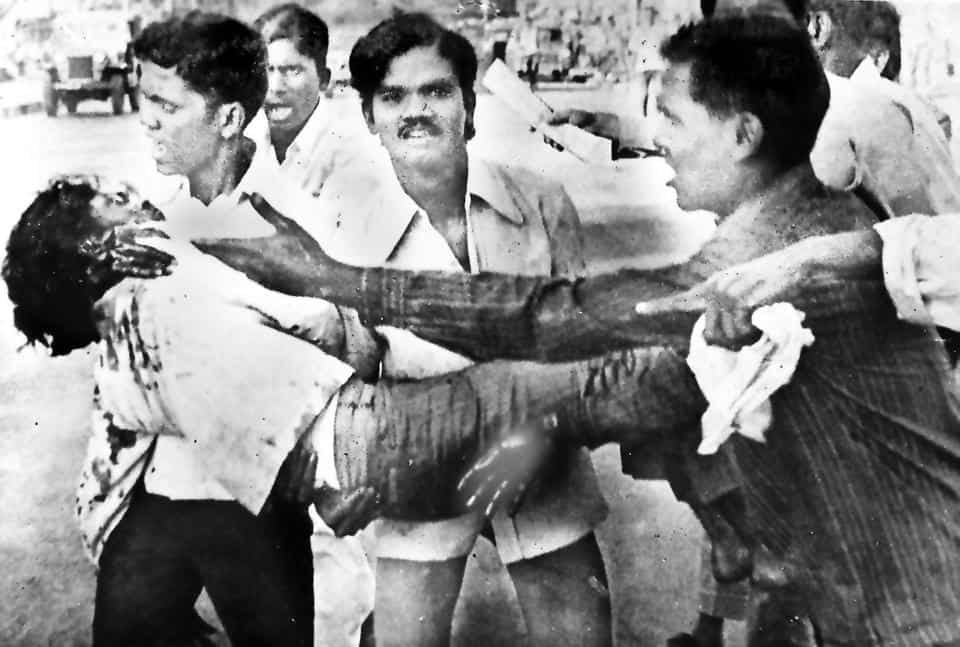
Bhagwat Jadhav murdered by Shiv Sena activists, during the Worli riots, Mumbai. 10 January 1974. He was 22 then. Courtesy: Forward Press
GX: Was your brother also in the movement from the initial days?
SJ: Yes yes, he joined from the beginning, at one of the initial meetings that were held. Regular meetings would be conducted by the group. They were taking out rallies, attended by thousands of people. The first such rally was organised in 1972, from the Worli Chawl. The police and Shiv Sena would regularly attack these rallies. Most of the police personnel’s children were Shiv Sainiks. They would dress up in their fathers’ police uniforms and attack our rallies. Still in the face of such repression, the Panthers relentlessly organised across the state for 2 years. Campaigns were run, units were formed throughout the state, they would get calls from villagers to visit their villages and set up Dalit Panther units. On 10th January 1974, a historic anti-Congress Government rally led by Namdev Dhasal, from Dadar to Mantralay, shook the administration. It was a huge rally, almost 5km long, joined by tens of thousands of people.
Congress, Shiv Sena, Jan Sangh (BJP’s precursor), and RSS got together to plan how to control the rally.
GX: They all were in this together?
SJ: Yes yes. They pushed Shiv Sena to the front, but the planning was done by all those forces in complete collaboration. The Congress had the responsibility of providing state-administration support to the attackers. Shiv Sena were anyway essentially a part of the Congress. So much so that they were commonly called as ‘Vasant Sena’ [after the Congress CM’s name].
GX: Ok, so what happened on that day?
SJ: With all the plannings done, on the day of the rally, they attacked it with all their might. They were armed with stones, tubelights, and other sharp objects. They had set themselves up on the terraces of buildings along the route of the rally, and all of a sudden started throwing sharp stones upon us from these rooftops. The police instead of protecting us, stood and watched and let the stone peltings go on. My brother [Bhagwat], in trying to save a woman and her children from the stones, got hit on his head by a sharp stone, and bled to death. He became the first martyr from the Dalit Panthers Movement. And at this point, the police instead of arresting the attackers, opened tear gas and lathi charge on the people in the rally, adding to the mayhem. Another activist, Ramesh Deorukhkar, was shot down the following day when the police opened fire on the protestors.
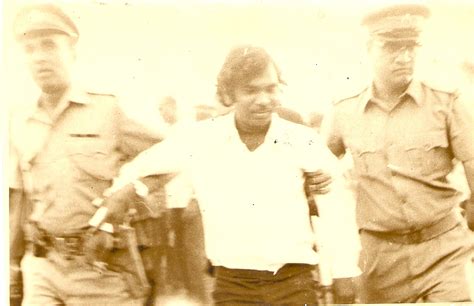
JV Pawar, Dalit literary figure, anti-caste activist and co-founder of the Dalit Panthers. Courtesy: Forward Press.
After this martyrdom, the movement exploded across the state, people took to the streets everywhere, to the extent that even the various RPIs were forced to, for the time being, cut ties with the Congress and join our rallies. Overnight people themselves formed Dalit Panthers units in every galli, every mohalla. The political influence of the Panthers among the Dalit youth of the state reached new heights. The first public meeting after my brother’s martyrdom was called on January 20th, which was attended by tens of thousands of angry people.
GX: Did you file a case? Did anything come out of the investigations? What is the status now? Have the accused been brought to justice?
SJ: Nothing has been resolved, no one has been convicted. The Congress Government had appointed an Enquiry Commission under S.B. Bhasme. The Bhasme Commission accused the police of having committed crimes and of taking a blatantly partisan role. But the Government sent the enquiry report into the cold storage and nothing came out if it. All these Government-appointed Commissions are meant to be just eyewash. They did the same thing with the Gundewar Commission after the Ramabai Nagar killings, and now they have set up a Commission for the Bhima Koregaon attacks. They just want to water down ongoing struggles because they create a popular illusion of justice being done.
GX: You said the movement reached new heights after the martyrdom. But then 2 years later, the split happened, and that was the end of this phase of the movement. What led to the split, even when the movement was going so strong?
SJ: Yes, in 1974, a split happened between the two leaders – Namdev Dhasal and Raja Dhale, because of political ideological conflicts. Which is unfortunate since the 2 years from ‘72 to ‘74 were literally the peak of the movement. And the energy was such that even now people across Maharashtra talk about it. Even now they say that Panthers should have been around. What is perhaps even more unfortunate than the split itself is that after the movement broke, a section of the active members like Arun Kamble, Gangadhar Gade and others went and formed a new organisation called the Bharatiya Dalit Panthers in 1975, under the leadership of Ramdas Athawale.
GX: Was Ramdas Athawale [current Minister of State for Social Justice and Empowerment under the BJP Government, leader of the biggest fraction of RPI – RPI(Athawale)] with the Dalit Panthers?
SJ: Yes, he was a full-time activist with the Panthers and a very popular organiser, used to work with Raja Dhale. He began as a student leader at Mumbai’s Siddharth College which BR Ambedkar founded, and spent years organising Dalit communities across villages. He later rose to prominence through leadership in the Naamantar movement – demanding the renaming of the Marathwada University after Dr Babasaheb Ambedkar. In 1978, the Shiv Sena and upper caste forces launched violent attacks on the Dalit protestors across the state, specially in Marathwada, as they were opposed to renaming the University. During the riots and arson, Athawale and members of the BDP would rush to the affected areas to provide protection to Dalits, and fight the Shiv Sena. Largely through this movement, BDP emerged as the most significant of the factions of the erstwhile Dalit Panthers and Athawale emerged as its leader.
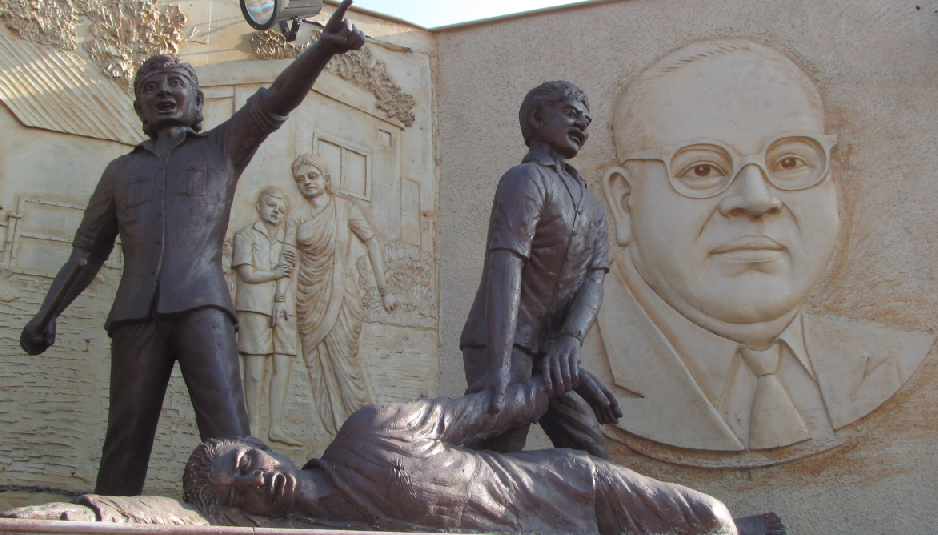
The Naamantar Movement Martyrdom Memorial. The monument is situated at the spot where Avinash Dongre, a child protesting in support of the Naamantar Andolan, was shot in the head by police on 4 August 1978. Four others – Dilip Ramteke, Abdul Sattar, Roshan Borkar and Ratan Mendhe – also lost their lives nearby.
GX: What about Raja Dhale after the split?
SJ: He went on to form the organisation called Mass Movement. Namdev Dhasal went on to form his own organisation. He was not suspended by Raja Dhale from the party, though that is what is rumoured. He himself drifted away. And because of the clash between the two leaders, the younger members of the organisation went on to form BDP under Athawale.
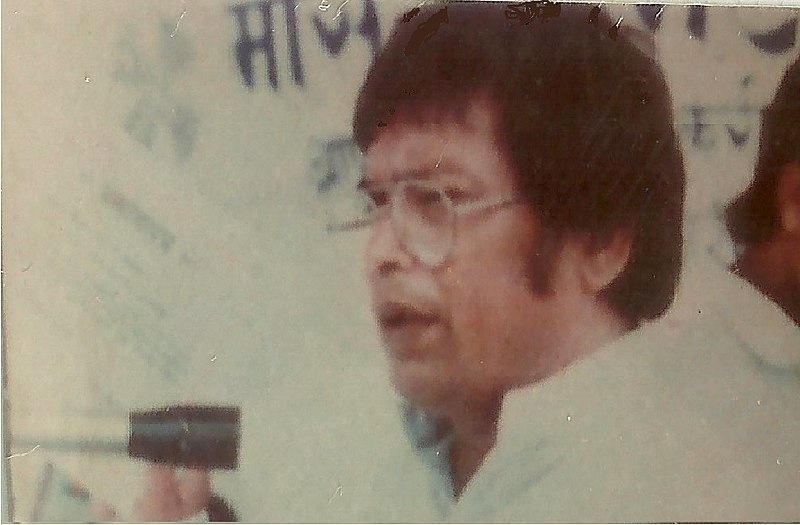
Raja Dhale, anti-caste writer and activist, one of the early members and subsequent leader of the Dalit Panthers.
GX: Could we go back to the role of the Shiv Sena during that period in mobilising people, in sabotaging progressive movements, etc.
SJ: Shiv Sena successfully rallied people from our communities as their foot-soldiers. Although the leadership was only Marathas, their ranks on the streets were Dalit youth only. Nowadays in order to maintain their hegemony, they have had to allow Dalits in the leadership as well, but that was not the case then. They have also distributed a lot of money to people, so people have kept joining them. Ironically, the thing that they did to us – using force and money they split our organisations, breaking them into fractions, after Bal Thackerey, that ghost has come to haunt them too. They also split into Shiv Sena and MNS. Now also they are regularly getting exposed, they are feeling more and more pressure from their cadres, who are working for them on the streets.
GX: That’s an interesting point you make about Shiv Sena getting ‘exposed’ to its own cadres. Is that also contributing to their growing distancing from the BJP and other Sangh outfits? Because the mainstream media always portrays such posturing by the Sena leaders as mere electoral strategy. But is there anything deeper that is going on?
SJ: Absolutely! We know from our own personal experience that the Sena leadership is finding it increasingly hard to justify their alliance with these clearly casteist savarna forces, and their hypocrisy is getting exposed every day. The cadres on the ground are livid with the leadership. In today’s BEST (Brihanmumbai Electricity Supply and Transport) bus-strike also, though they initially said they’d participate in it, Shiv Sena ultimately withdrew its support for the strike. This has once again angered their cadres en masse, and they are now trying to patch up things. Let’s see where this ends up. We are keeping a watch.
GX: But could you tell us a bit about how they operated then, in the 70s, to weaken the anti-caste struggle and the working class struggle? Shiv Sena had openly avowed to destroy Communist politics in the state.
SJ: The problem actually was within ourselves. Shiv Sena took advantage of that. The main problem, as far as the organisation Dalit Panthers was concerned with, was the split that happened between Raja Dhale and Namdev Dhasal, and the ideological rift that led to that. Raja Dhale accused Namdev of being a Communist. Dhale himself was a Buddhist, and wanted to wage a Buddhist struggle. He was completely against Communists and violent struggles. Namdev was hardly any trained Communist that way, but he asked, if even Buddhists are being violently attacked, how can they agitate in a non-violent peaceful way? This was seen as Namdev becoming a Communist, and Raja Dhale did not agree with it. One section of the Panthers accused Namdev of being controlled by the Communists. Namdev Dhasal had a huge following, but this allegation took a toll on that. These conflicts can remain, but I think it is incorrect to take it to the extent that the real enemies get to take advantage of our internal conflict or contradictions. We are all brothers at the end of the day, why should we let outsiders to take advantage of our internal strife? In this case, our entire community got split politically, ideologically. The split was so deep that even individual families underwent this political divide. Net result was that Shiv Sena and Congress kind of groups took advantage of this to make inroads into the community, and emerged as the winners ultimately.
Also we should note that Namdev Dhasal was the first person to call out the Communists on several occasions, on the question of anti-caste struggle. One of the main such leaders then in Mumbai was Krishna Desai, who was eventually murdered by Shiv Sena. And after that, Shiv Sena anyway effectively took over the entire mill-workers movement that was led by Desai. Same thing happened to Datta Samant, another huge trade union leader, who was also killed. All of this led to Shiv Sena capturing the working class politics of Mumbai.
We also have to note that while they were after the Communists, but Dalits were their prime targets. They couldn’t say that openly, which is why they would use the euphemism of ‘Communists’. Same thing they are doing now if you see. After the Bhima Koregaon incident, the State said they are going after Communists and ‘Urban Naxals’ and what not, but essentially what they want to do is to break the anti-caste struggle, and attack Dalit politics. In a way, what we are seeing today with Bhima Koregaon and its aftermath, this was very similar to what happened in the ‘70s.
GX: But where do you think the struggle went wrong other than the split? Why couldn’t the community collectively negotiate such a split? And a somewhat similar question, how is it that such a powerful vibrant workers’ movement as had grown in Bombay, could so easily capitulate to Sena politics?
SJ: The one word answer is Hindutva, over and above the usual pressures and forces that want to break such movements. First of all, the kind of creative, organising work that the RSS has done historically everywhere in the state in building up their own organisation, we haven’t been able to do that. As far as the Dalit Panthers are concerned, they were also not given the scope by the State because of the attacks that were launched on them, though they had the vision for it, and were working towards it. They just didn’t get enough time. But if you look at the overall situation, our leaders or organisers have not been as sincere as the Swayamsevaks or the RSS karyakartas, many of whom have dedicated their all for their ideology. If you look at Ramdas Athawale for instance, he started with organising our people on the Naamantar demand, he spent years living in hostels without anything, working full time for emancipation of our people. But once he got access to power, over the past 35 years of his career as a politican, he has amassed a property of 300 crore rupees. Every time our struggles have thrown up a key leader, those in power have done everything in their capacity to buy those leaders over. And unfortunately, too many times our leaders have fallen for such things and betrayed the movement.
The other thing is our own infighting, like I mentioned. Same thing you can see in how the RPI split almost immediately after the death of Dr. Ambedkar. These splits were purely because of selfish interests of some of the leaders of the party, and not because of any major ideological difference. The Dalit Panthers also split. Our people are emotional when it comes to such struggles, and it is in a way easy for the rulers to engineer such things in the community.
Also, obviously, the anti-Dalit forces have the entire might of the State, money and police on their side – what do we have? In the case of Bhima Koregaon also, we saw how the entire State machinery was mobilised to save (Sambhaji) Bhide and (Milind) Ekbote – the ones who actually engineered the attacks on the dalit people. But who came for our protection? No one!
Regarding your question of how the workers’ struggles capitulated so easily, again the answer is Hindutva. The established Communist parties and Trade Unions did not take the question of Caste and Hinduism seriously. In fact they even accused Dalit Panthers kind of movements of breaking the workers’ struggles by bringing in the question of caste. So once the Babri demolition happened in 1992, the Mumbai communal riots were engineered in 1992/93, and the Hindutva brigade ramped up the hysteria about the Ram Temple in Ayodhya, the working class people fell for it and joined forces like the Sena in huge numbers. Anyway by then the key Communist leadership had been annihilated – people like Krishna Desai and Datta Samant. So the Communist movement had nowhere to go.
GX: Another question was, many times we see that such splits happen between men in the leadership. Anyway mostly its usually men in the leadership of political struggles. Lot of times because of that, our political rhetoric, or our political cultural production could end up being insensitive to other genders, including women. Do you think this comes in the way of women’s participation in such movements, or them taking up leadership roles? Do you feel this has weakened movements of resistance from within?
SJ: Thats a good point, you are absolutely right. And this did happen in the Dalit Panthers’ Movement. The leadership was mostly men. But its not like there were no women leaders in the struggle. I can think of people like Kausalyabai, Sakkubai Mulke, and a few others, but yes they never made it to the top leadership. Mistakes were made, and we should not repeat such mistakes. Also today it is difficult for men to be in such control of leadership, given how much more aware the current generation is.
GX: Final question. What are your thoughts on what is happening in the country today when it comes to the anti-caste movement? Yesterday itself, we saw the news of the Lok Sabha passing the Bill for Economic Reservation for upper castes. How do you see the resistance struggle today, when you compare (if you do) with what happened in the ‘70s?
SJ: Our people have been fighting relentlessly across the country against the current regime’s anti-Dalit politics. We have to see where it goes. Like I said before, I do see a lot of similarities between what happened in the ‘70s with what’s happening now. We must ensure we learn from the political mistakes we have made in the past, and I can see signs of that happening. For example, it is no longer as easy to dominate the women’s voices today within the movement. The awareness at a mass level about the real politics, and its complexities, has surely increased. But there are many things that we still need to do.
For one thing, we must form Trade Unions for workers from our communities, because we have seen historically how the upper caste led Unions have sabotaged our struggles and demands. There is no reason anymore why we should depend on such leadership or organisations. We must take things in our own hands now, organise our people, voice our own demands, and fight for them. I am annoyed with the Dalit organisations who do not organise on working class issues. Why, aren’t our people part of the working class of this country? The other thing is, we need to rebuild militant anti-caste politics. This passive non-militant petitioning is clearly not going to work.
GX: Thanks a lot Sumedh dada for your time, and such insights into the history and present of Maharashtra’s anti-caste struggle.
SJ: Jai Bhim!
Unless otherwise specified, all photos are sourced from the Internet.

